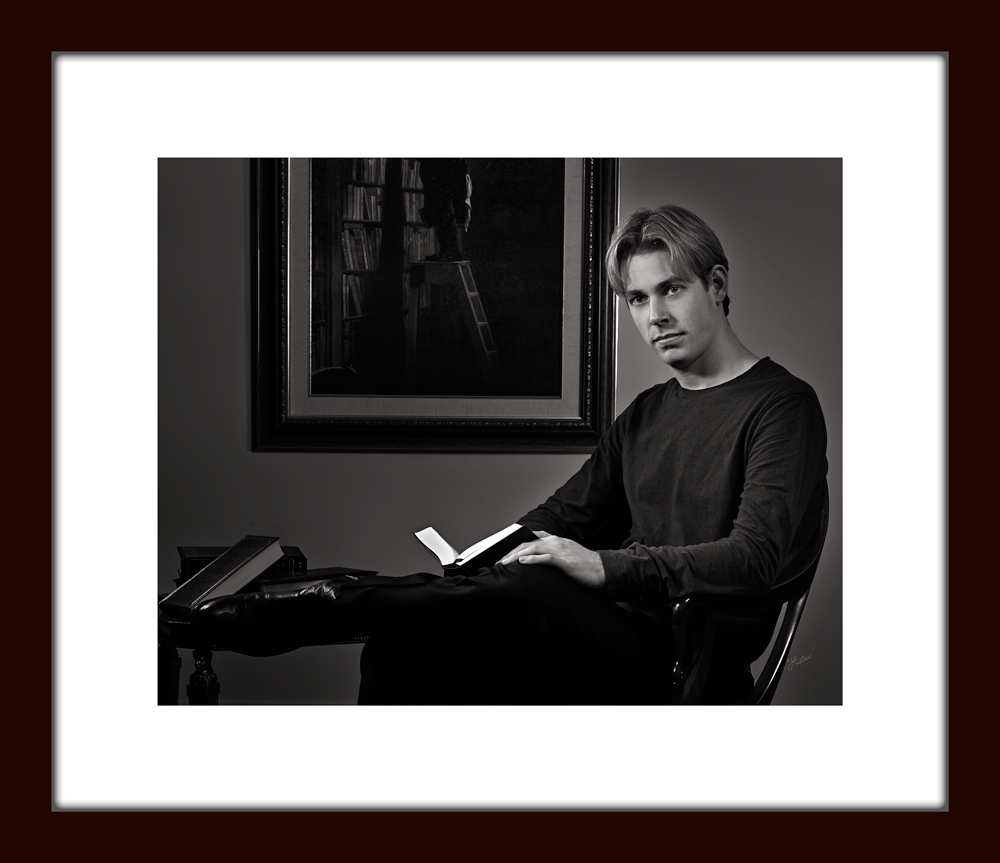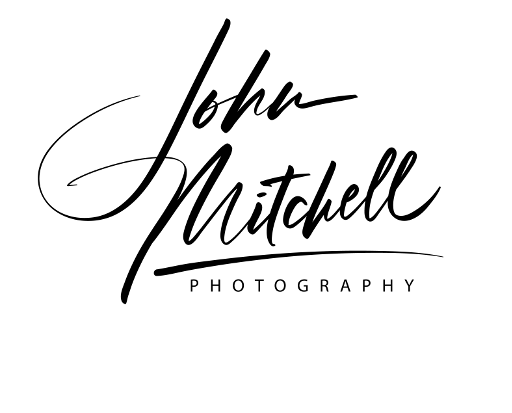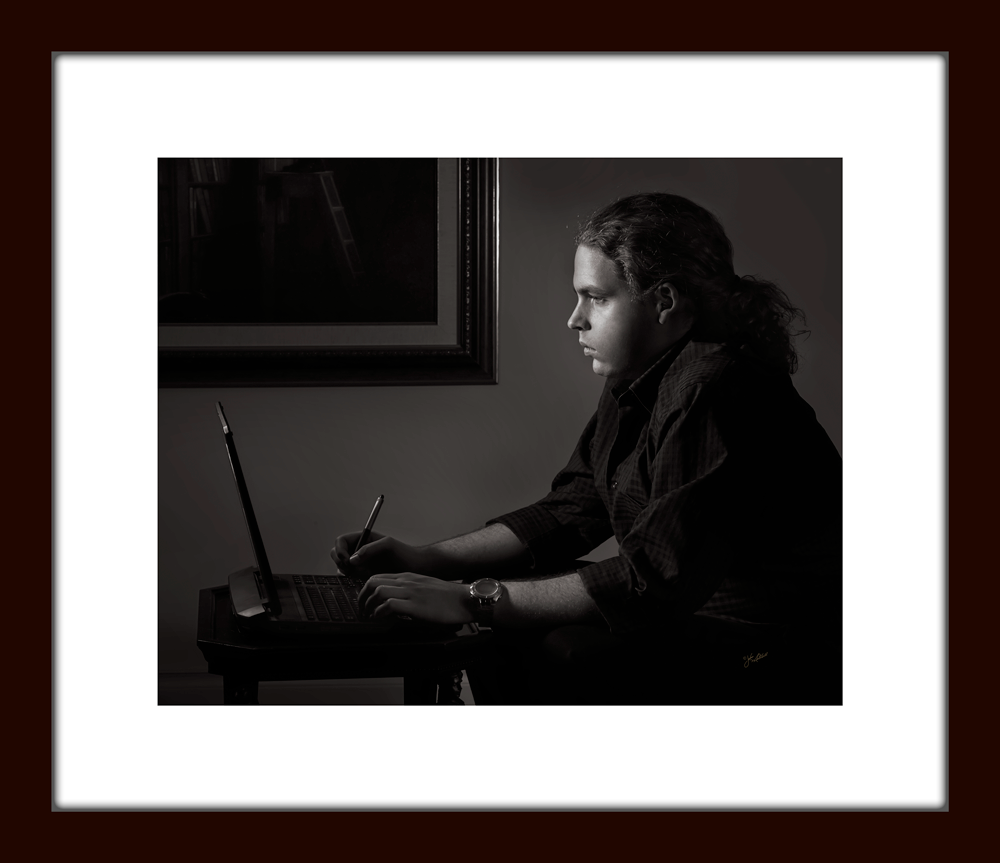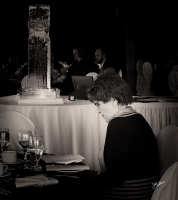When presented with a set of portrait previews will you select the right one?
When I had my first professional portrait created I learned photographers don’t think like regular people. You can read about that experience here.
Too often, when selecting our own portraits we get caught in the trap of “what we think we look like.” If you have ever sat in front of my camera you have likely heard me tell one or both of these stories.
I opened my full time studio on King Street in 1985. The first portrait assignment I received was for a couple celebrating their 40th wedding anniversary. I quickly learned the person that should not pick your portrait is you. This was in the days of film, and I was still providing paper proofs that clients could take home to make their selection. Days later they returned with the proofs in hand and I greeted them and asked if they found something they liked? The gentleman quite gruffly informed me “we don’t like any of them.” In my mind I’m thinking this is not the way I want to start a business. With a deflated ego I asked what was wrong with them only to hear the same gruff voice say “we don’t know, we just don’t like them.” I quickly advised them that I would be only too glad to re-shoot them if they could just tell me what it was they didn’t like so I didn’t make the same mistake twice. All that got me was a repeat of “we don’t know, we just don’t like them.”
It was time to try a different strategy. I explained a friend of mine had a policy at his studio that you could comment on any portrait other than your own. I suggested they layout the proofs and asked if the gentleman could show me the one he liked best of his wife and perhaps she could show me the one she liked best of her husband. In this way I was hoping to get an idea of what they were looking for, or at least – what they didn’t like. They spread the previews on the table and in only a matter of seconds I we were going to have a royal battle as they both put their finger on the same preview. Out of his mouth came the words “you like that of me?” Her response was immediate; “that’s the best damn picture taken of you since we’ve be married. But how could you like that smile on me?” His reply was just a quick as he looked at her and said “that’s the way you smile at me all the time. I love that smile.”
I got the order and no reshoot was needed.
The second incident took place in the mid 1990’s. At that time I had my store front studio on King Street in Preston Cambridge. A block down the street was A.F. (Sandy) Forbes Insurance. I knew Sandy, as my parents had dealt with him for years, he lived on the same street as them, and I also knew him from the Preston – Hespeler Rotary club.
One day Sandy came into my studio and told me he had a portrait of himself that was taken when he was in the navy and he wondered if I would like to have it. He told me how it came to be created. Sandy had just received his commission in the navy and had received his back pay. At the time he was on leave in Ottawa. He decided he would part with a portion of his back pay to get a portrait done. Out of an envelope Sandy pulled an 8×10 black and white portrait, saying “thesis the portrait.” I took one look, my eyes drifted to the lower right hand corner where the well known letters were located – K a r s h.
I looked at Sandy and asked “do you know what you have here?” He didn’t so I went on to explain how famous Karsh was and told him the story of Karsh creating the famous portrait of Churchill. I told Sandy I would love to have the portrait but that it really should be given to his daughters because of its value. It was the first time I had seen an original Karsh print, and I carefully handed it back to Mr. Forbes. Sandy then told me the story of having the portrait made.
He was a little man and had me sit in front of his camera. He went about adjusting his lights and then adjusting me. I think he took five photographs and then told me to come back tomorrow to collect the proofs. I returned the next day and was presented with five small proof images and very specific instructions. I was told to show the portraits to 3-5 friends that knew me very well and ask them to put an “x” on the back of the proof they liked best. You are not to tell them anything about the portraits, whether you like them or hate them. Just ask them to put an “x” on the back of the one they like best. Bring all five proofs back to me tomorrow. Sandy said he followed the instructions and returned with the proofs to Karsh’s studio the next day. Karsh took the proofs, laid them face down on the counter, turned over the ones with the most “x’s”, looked at those ones carefully and then said to Sandy “this is the one I’m printing.”
At no time was Sandy ever asked “which one do you like.” Karsh knew that other people see us differently than we see ourselves. He also knew that we are our own worst critic. He knew that asking people who knew the subject “which is the best portrait” he would get an honest opinion of which was the best image of both their appearance and personality. Armed with this information he would select from their chosen few which was the best image from the artistic point of view.
This is the one I will print
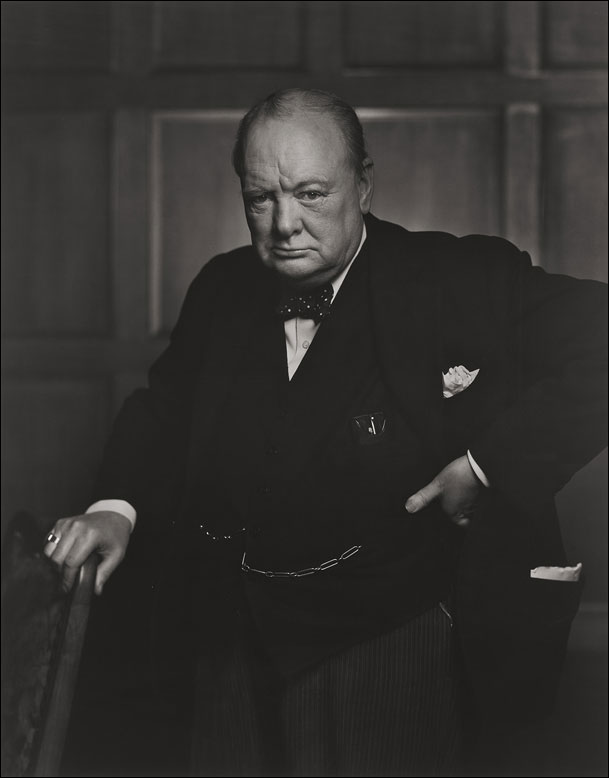
Churchill by Yousuf Karsh
From that day on I used this process in getting my business portrait clients to select their image. When I went digital and began showing the proofs on line I did so with these written instructions:
The images have been cropped in a 5:7 vertical ratio, which is the best ratio for an individual or couples portrait.
I recommend using the following procedure for selecting the images:
- Share the gallery with a 3-5 people. Select the people carefully. You should select at least one person that knows you very well. They will know which image is the best one of the “real you.” Show it to clients, co-workers and friends. If a corporate “image” is to be followed show it to the person in charge of that image to make sure it fits within the range of the specs. Ask each person for their one or two choices for your portrait asking them “which one is the best image of you” and “which image projects the best business image for me?” Say nothing more to them. Do not tell them that you have a “favorite, like them all or hate all of them.” Note the number to identify the file appears when you mouse over the thumbnail.
- Remember, most people are more critical of themselves than they are of anyone else and we are used to seeing ourselves in the mirror, not the way others see us. When they give you their selection thank them and say nothing more. Do not give them any cause to second guess their opinions. First impressions are usually right.
- Send me the list of the ones people selected and how many votes it got. I will review those and tell you from an artist’s point of view which I think is the best and why.
The final selection is yours. Let me know your choice.
I will then finish the image of your choice.
Thank you for selecting John Mitchell Photography. I look forward to providing you with your finished image(s)
I follow Karsh’s method with one exception; I give the client the final decision. We live in different times.
